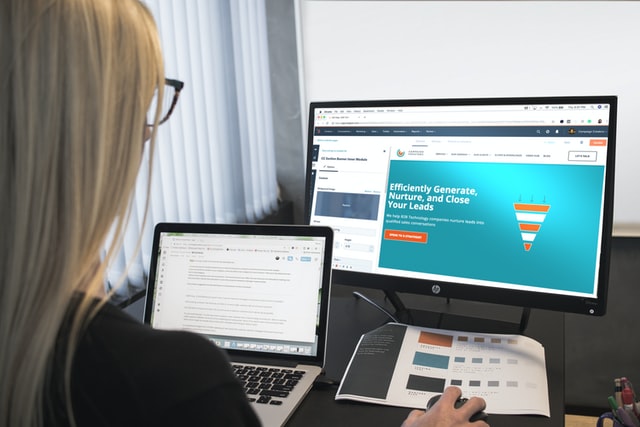A website isn’t nearly as challenging to put together nowadays as it used to be. There is no need to be an expert in coding to develop a beautiful website using the latest technology and tools.
On the other hand, the most remarkable outcomes can only be achieved by carefully planning each stage. Four steps are customary for web designers to break down the process. As a result, you may build your site efficiently and visually appealingly.
What Are the Benefits of Laying Out and Planning Your Site Before You Start Building It?
It’s easy to get straight into posting your content after putting up a simple design on your new website. As a result of today’s high-quality website-building tools, this is a typical blunder.
However, even if you use these tools to create a website, you still need to follow these four steps. This makes it easier for you to maintain and update your website in the future.
Stage 1: Architecture and Layout
Your foundation is laid by the site’s design and layout. The following steps are required in this phase:
- Choosing and registering a domain name is the first step.
- Choosing the Most Reliable Web Hosting
- Incorporating a website-building platform or tool (if using one)
- Creating a Site Map for Your Business
Investing the time to ensure these essentials are in place can help you prevent future issues. For example, if you have the correct name and web hosting, you won’t have to worry about them again for years.
Choosing how to create your site will have a long-term influence as well. A good example is if you opt to use WordPress to build your website, you won’t need or desire to convert to another system afterward.
At this point, your design layout is a bit different from the rest of the stages. Things like menus and column positioning directly influence how the remainder of the process works. Planning layout is essential. Even if you decide to modify your design in the future, you shouldn’t do it often.
Stage 2: Content, SEO, and Navigation
Stage 2 is theoretically unending. You’re constantly adding fresh material, improving your SEO, and ensuring your site is user-friendly. Creating your first material is all you need to do for the time being. You want to ensure that your site has a lot of information for visitors to enjoy right from the start, whether written, visual, or audio.
SEO is also a significant consideration. This includes ensuring that your site tags are correctly filled out, using suitable linking tactics, and much more. Search engine algorithms are constantly changing, so you must ensure your SEO approach is consistently up to date.
Finally, your site’s navigation. It’s important to ensure that your onsite connection is made so visitors can simply locate what they’re looking for. You need to take care of several things before you can begin creating your material, such as setting up the different categories you’ll be utilizing and including relevant connections.
Stage 3: Graphics, Colors, and Multimedia.
Next, include all of the “extras” contributing to a well-designed website. Menu icons, supporting images, and other visual elements are all part of the design of your website. At this point, you should also decide on your website’s general color palette. If you want your visitors to remain on your site for a long time, you must pay attention to the colors and visuals you use.
Your website’s pages must be put up in a manner that’s simple to follow and provides a feeling of continuity for visitors. A consistent text format and the ability to include photos and videos in the same spot may all help to facilitate this.
Stage 4: Launching, Analyzing, and Revising
It’s time to open your site to the public after completing the first three development phases. Of course, this is where the main work on your website starts. Every part of your site should be analyzed and regularly used to make changes and improvements. All of this is on top of routinely updating the website with fresh information to keep users interested.
In many respects, the continual modifications of your site are done by going through each of the first three phases, notably stage 2. You should constantly update your website, test new features, and determine which ones perform best for you.
Setting Web Design Objectives
Making a website doesn’t have to be tough if you prepare beforehand. Creating a working website is possible for those who have never worked with web design before.
Before taking any action, you must clearly define your goals. This is referred to as “stage zero” in the web design process since you should determine your objectives before you begin working on your website.
This is critical since the design of your site is heavily influenced by the objectives you set for it. In this case, a basic page established using a site builder works well if you want your website to merely give location, hours, and contact information for possible clients of your company.
It’s quite different when attempting to build an e-commerce marketplace to sell products online. It is possible to have a variety of objectives for a website, and each requires a distinct strategy.
Conclusion
Think about what you want your site to achieve before you start building it. Begin with stage 1 and work through the rest of the project. While it’s important to strategize and plan, you must also get things done.
You may guarantee that you’re going ahead toward your objective of having a website operational and successful by following these four stages of web design.


